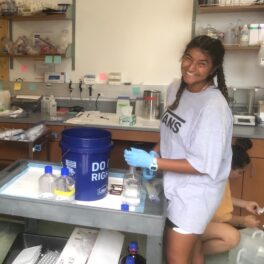The six astronaut-like crew members of the third Hawai‘i Space Exploration Analog and Simulation (HI-SEAS) mission has been selected. Starting 15 October 2014, the participants will be isolated in their dome habitat at the site on the slopes of Mauna Loa on Hawai‘i Island for eight months. This mission is studying group cohesion and factors that affect team performance. “Astronauts are stoic,” said Kim Binsted, associate professor at UH and a project principal investigator. “You ask them how they’re doing and they’ll say ‘fine.’ It’s quite difficult to get at some of the warnings that you might want to detect of conflict or a crew losing coherence. One of the ideas behind the HI-SEAS study is that forewarned is forearmed.”
Read more about it and watch the videos at KITV4 and Space Safety Magazine; read more about it at West Hawaii Today and in the UH System New.














